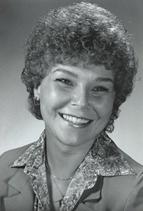
Barbara Palmer
By Kerry Dunning
Spring, 2019
Legends are born from brilliance and tenaciousness, and in part from events often not recognized at the time as game changers. Act by act built a mosaic of national championships, Olympians, all-Americans in women's intercollegiate sports at Florida State University.
 |
Barbara Palmer |
John Bridgers, Florida State's athletic director from 1973-79, gets a lot of credit for his hiring of Dick Howser, Mike Martin, and Bobby Bowden.
But in this 50th year of women's intercollegiate sports at FSU, the real game changer may have been hiring Barbara Palmer as the first women's athletic director.
Bridgers came to campus amidst a major scandal, a losing football team, and athletic department deficit of epic proportions. And he exited orchestrating the turnaround. It would have been easy for Bridgers to concentrate on fixing the sports in place - yet he purposefully elected not to cut women's athletics.
Palmer took that mission to heart, taking the budget from $163,000 to over $1 million in five years with two things in mind: women's sports needed funding and men's sports would not be healthy with lost revenue.
"The first day on the job, I opened a bottom desk drawer and there was money sitting there. It was being raised for volleyball to travel." Then Palmer says, "I knew this was going to be a challenge. I started asking the tough questions."
The depth of the problem became much clearer to Palmer when she watched volleyball coach Cecile Reynaud stuff a passenger van with equipment and people, make the long drive to North Carolina for a competition, and then drive back the same day because they couldn't afford to stay in a hotel. She vowed to make a change.
"Why would you treat your daughters like that, with these God-given talents?" she would ask.
Bridgers, in his book What's Right with Football (1995), said, "(Palmer) was hard working, had good judgment, was a good fundraiser, and appreciated the problems of not crippling the men's athletic program in order to promote women's athletics."
She started at the ground level - lobbying. She talked the Florida Legislature into granting nearly $700,000 for women's sports. It took a lot of homework to get to that point.
Palmer would use Title IX to begin access to needed dollars to build the program. Title IX (of the 1972 Educational Amendment) states, "No person in the United States shall, on the basis of sex, be excluded from participation in, be denied the benefits of, or be subjected to discrimination under any education program or activity receiving Federal financial assistance…." It covered athletics but did not guarantee equal distribution of funds by gender. Simply put - and it was not simple to enact - if the percentage of male to female athletes (in all programs) was 54% to 46%, then the women had the right to 46% of the department's revenue.
After worrying about the accounting of money in the bottom drawer of a desk (which started a department ledger), Palmer developed a formula for funding, with the help of Mary Seals at the Board of Regents office providing her a copy of the budget.
"I looked at every line item in the budget for men's sports," she said. "I took football out of the equation and looked at player supplies. I'd average the supplies for men. I looked at the medium salary of men's coaches and we came up with a figure."
And Palmer kept going until she was ready to take it to Herb Morgan, a Florida State alum, and then chairman of the Florida House Appropriations and Rules Committees. She took the formula to Dempsey Barron, an influential State Senator who served as President of that body in 1975-76. Governor Bob Graham also supported the effort.
The hard work paid off in the funding for FSU. "There were some tough days, especially when men were thinking that they would be losing dollars. We had to stretch things, scratching and clawing. I'm very proud that our Legislature saw it was important to give young women opportunity."
Her goal was to provide talented female athletes with and education and cover athletic expenses.
"With her leadership, especially for the track and field budget; what she pushed ahead in the early days through the mid '80s was something," said retired coach Terry Long. "She was swimming upstream in that environment and leveraging more revenue for coaches and programs."
Anne Davis was a recipient of changes when she arrived in 1979.
"Because of Barbara Palmer's efforts, Florida State was fully funded and gained the recognition," Davis said. "Myself and other coaches could move from graduate assistants into full-time coaching jobs."
And as a side effect, leading the charge, Florida became the first state to have all schools in compliance with Title IX.
Explaining some of the motivation, Palmer says "I didn't have the opportunity young women today have, I played city league ball (softball and basketball)." But it stopped there.
Until her mother convinced her to make a career change.
Palmer's work was rewarded with the addition of softball, track and golf changes immediately. And long term it turned into five national championships and 226 all-Americans during her tenure. That earned her a lifetime achievement award from the national Association of Collegiate Women Athletics Administrators (NACWAA). And a place in Florida State history.